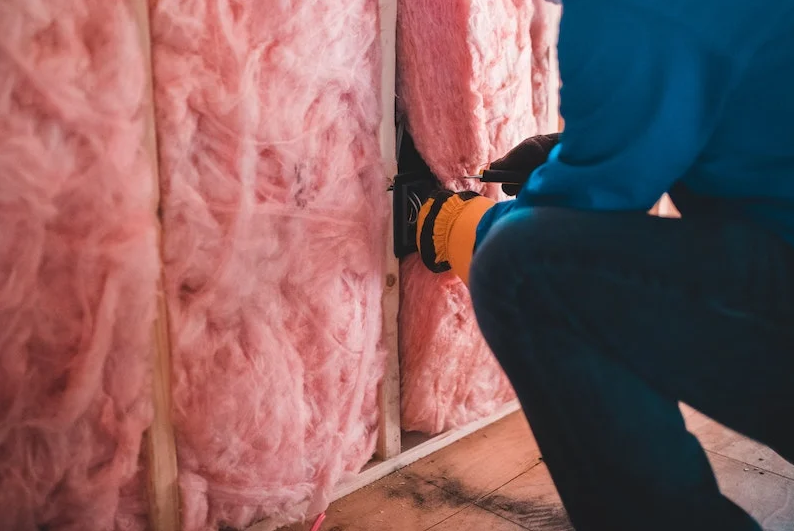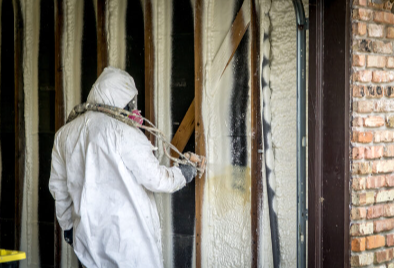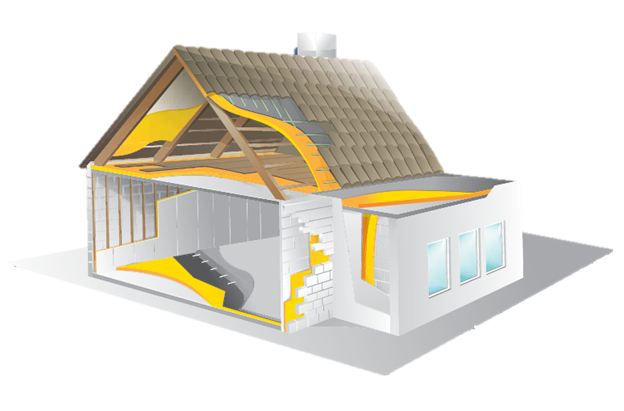
Legal regulations and people's growing awareness have resulted in the need to reduce energy demand and related costs. An important element in the struggle against excessive use of energy in residential buildings and public utility facilities are certainly the insulation materials, adapted to function in specific conditions. Reducing energy consumption can be achieved through effective thermal insulation of all building partitions, but without the right materials this will be virtually impossible. As a result, we will discuss it in the following paper.
Insulating material and its coefficient
The most common thermal insulation materials are polystyrene foam, mineral wool and polyurethane foam, which are used in buildings both as thermal insulation and as effective acoustic insulation. However, there are other products available on the market which offer equally favorable physical and chemical parameters. One of the most important of these parameters describing a thermal insulation material is the thermal conductivity coefficient (lambda). The lower the value of this coefficient, the better the thermal insulation of the material, and thus the more energy efficient the building. Thermal conductivity, thermal resistance, and thermal diffusivity were measured in a laboratory and compared with samples.
Mineral wool
The first time a building was insulated was in USA in 1880 when builders installed mineral wool in houses. From the 70s new and more effective insulation materials have been discovered.
This is a material that features a wide range of applications, ensuring proper insulation of the building, its effective acoustic insulation (it dampens air and shock sounds), as well as having a fire-protective properties.
Actually, mineral wool is also referred to rock wool, it is made from basalt and has high resistance to very high temperatures. The thermal conductivity coefficient for mineral wool products ranges from 0.031 to 0.045 W/mK. Mineral wool has high durability and resistance to deformation, and it does not degrade in contact with substances containing solvents. However, mineral wool absorbs water, which impairs its thermal insulation properties. To eliminate water absorption, mineral wool is impregnated with mineral oil or it is covered with foil. Moreover, rockwool is a material which is quite difficult to apply (e.g. gaps in the attic), especially for inexperienced persons, which also increases the risk of heat loss in the building. Rockwool will start to sink, compress and sag as it ages.
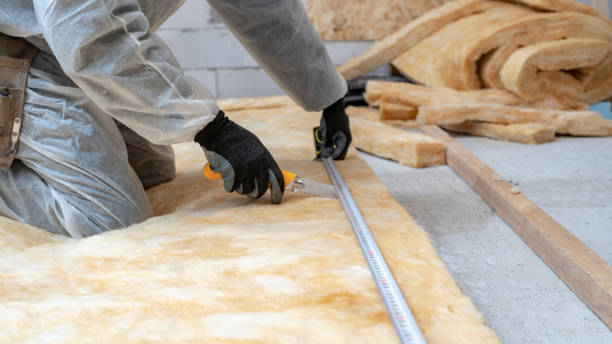
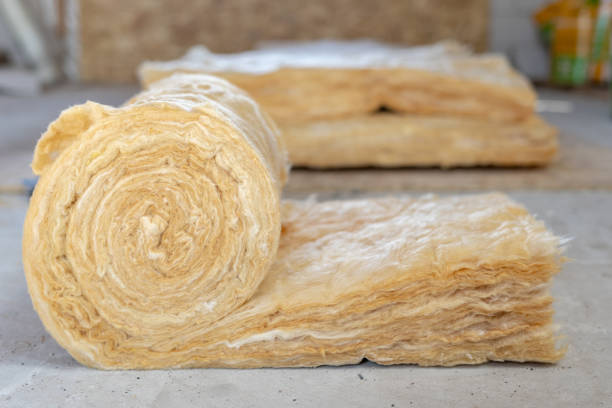
Fiberglass
Fiberglass is a popular traditional insulation option on the market made from quartz sand or recycled glass. Developed in the 1930s, the candy floss-like insulation is the go-to insulation method to date. This is no surprise as fiberglass is one of the cheapest insulation methods, whilst providing similar qualities as to the pricier alternatives.
Fiberglass does not shrink and this is an inflammable insulation type. However, fiberglass contains harmful glass particles that can cause respiratory irritation; furthermore, it cannot cover all gaps.
Polystyrene foam
Polystyrene foam, that is expanded polystyrene, due to the production process involving foaming (air in the pores of expanded polystyrene may cover as much as 98% of the volume of the finished product) provides a heat conductivity coefficient of 0.030-0.045 W/mK (e.g. white EPS foam 0.038 - 0.045 W/mK, graphite EPS foam 0.030 - 0.035 W/mK).
Polystyrene foam, as an insulating material, is primarily characterized by very low water absorption, due to which it can be successfully used to insulate those parts of a building which are exposed to contact with water, such as foundations, basement walls or floors on the ground.
In addition to traditional foamed polystyrene, extruded polystyrene is also available, providing thermal insulation at a level of 0.021 to 0.026 W/mK, which is harder and less absorbent. It is available in blue, green or pink and is recommended for insulating inverted roofs, garage floors and floors on the ground, i.e. wherever there are heavy loads.
However, expanded polystyrene does have its drawbacks. It is not resistant to a number of chemical agents, such as solvents, paints, glues and wood preservatives. Moreover, it is a material which is rather leaky in terms of water vapor diffusion (penetration). This means that only a small amount of steam penetrates through walls insulated with polystyrene foam.
Styrofoam is also sensitive to high temperatures and fire. Temperatures exceeding +80oC can damage it, however it is a material with self-extinguishing properties and in case of fire it does not burst into flames, but melts giving off a lot of black smoke.
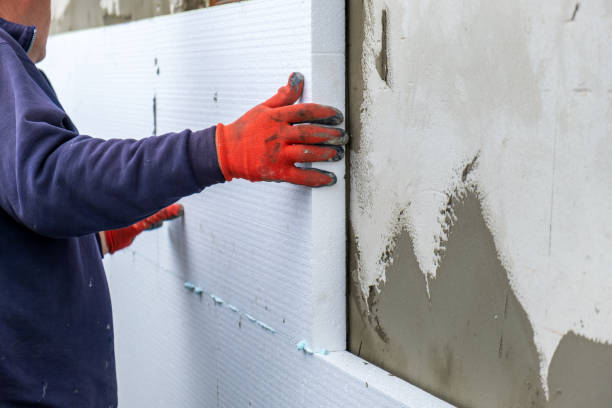
Polyurethane foam
Polyurethane (PUR) foam is rapidly becoming a popular insulation material. Currently, two types of polyurethane foams are used - PIR (polyisocyanurate) and PUR (polyurethane).
The name "PUR" stands for polyurethane, obtained by mixing two raw materials - polyol and isocyanate. As a result of mixing these components, with the use of specialized spraying machines, polyurethane foam is obtained. This type of insulation material is now widely used in building industry as an alternative material for insulation and thermal insulation of buildings, from foundations up to the roof. PUR foam performs very well in terms of user safety and functionality.
Closed-cell polyurethane foam enables achieving very good thermal insulation properties of layers, owing to low heat conductivity coefficient, which may amount even to λ = 0.020 W/mK.
A strong advantage of polyurethane foam is its speed and ease of application. It is applied with a spraying method, owing to which it increases its volume several dozen times in a few seconds and hardens in a rapid pace. PUR foam perfectly adapts to slanted, difficult surfaces, penetrating into the smallest gaps.
PUR foam is classified into open-cell and closed - cell insulating material. The former one has a sponge-like structure. It does not let water in and has very good thermal insulation properties, but allows steam to pass through, so that no fungus or mould can form underneath. It is lightweight, so you can, with the prior use of a membrane, spread it on the formwork under the roof.
Closed-cell foam, on the other hand, is slightly harder and is better suited for use on the outside of buildings. The internal structure of closed-cell PUR foam is made of microscopic closed bubbles, so it has good thermal insulation properties as well as high rigidity and appropriate hardness.
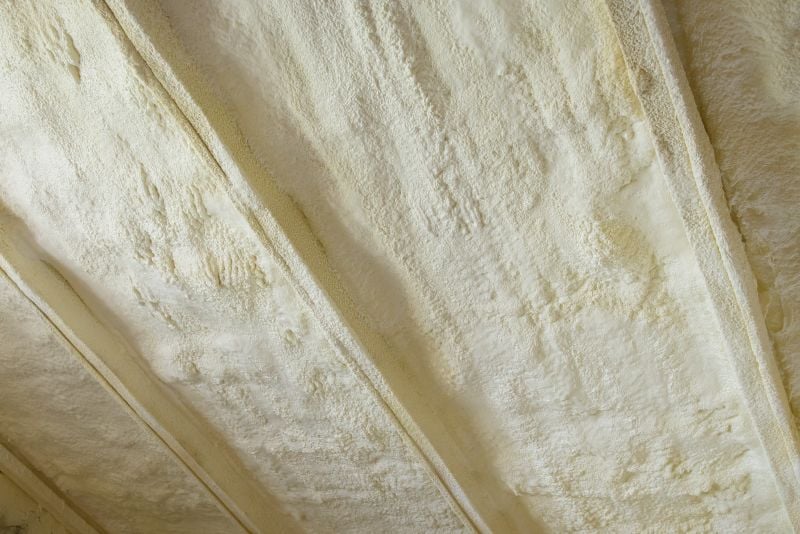
Cellulose fibers
This insulation material has very similar physical and chemical characteristics to mineral wool, but its use is much more limited. The heat transfer coefficient for this product is 0.039 W/mK, but despite this, cellulose fibers also provide good sound insulation and good vapor-permeability. Cellulose fibers have the ability to absorb and release water from their surroundings, so there is no need for application of a vapor barrier during insulation. However, there is one condition - the material must be well ventilated to allow it to dry fully. Fibers can be applied wet or dry. The dry method is where the shredded fibers are blown into pre-conditioned spaces in walls, ceilings, etc. and the wet method, involves wetting the cellulose fibers with water and adhesive.
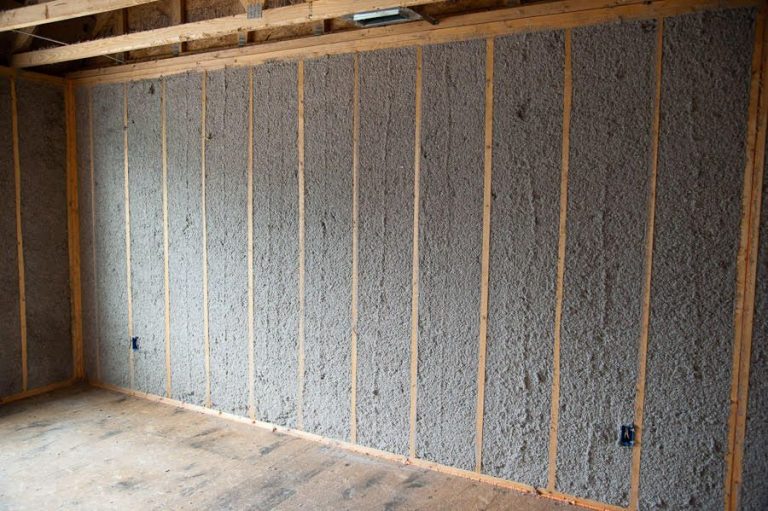
Imen Polymer Chemie Co. pioneer in polyurethane industry, sells raw materials of thermal insulation spray foam. For detailed information please contact us.




